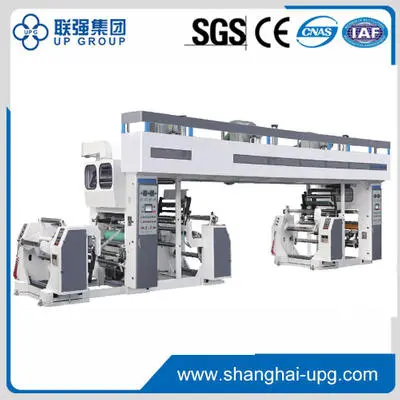In the field of laminating, two main methods are widely used: wet laminating and dry laminating. Both techniques are designed to improve the appearance, durability and overall quality of printed materials. However, wet and dry laminating involve different processes, each with its own advantages and applications. The purpose of this article is to shed light on the differences between wet laminating and dry laminating, with a focus on the application of dry laminators in the printing and packaging industry.
Wet lamination, as the name suggests, involves the use of a liquid adhesive to bond the laminating film to the substrate. This method typically involves the use of a solvent or water-based adhesive, which is applied to the substrate via a coating machine. The printed material is then passed through a set of heated rollers, which cures the adhesive and bonds the laminated film to the surface. Whilst wet lamination is effective in providing a strong bond and high clarity, it does have some disadvantages. The process can be time-consuming as the printed material needs to dry before further processing, and there may be concerns about the release of volatile organic compounds from solvent-based adhesives.
Dry lamination, on the other hand, is a solvent-free and more efficient alternative. Dry lamination involves applying an adhesive in the form of a pre-applied film or hot binder to the laminated film during the manufacturing process. The adhesive-coated film is then bonded to the substrate using heat and pressure, usually with the help of a dry laminator. This method eliminates the need for drying time and is therefore faster and more environmentally friendly. Dry lamination also allows for better control of the lamination process, resulting in a consistent, high-quality finished product.
It is worth reminding you that our company sells dry laminators.
LQ-GF800.1100A Fully Automatic High-Speed Dry Laminating Machine
Fully Automatic High-Speed Dry Laminating Machine have Independent external double station unwinder and rewinder
with automatic splicing function.Unwind automatic tension control, equipped with EPC device.
Terms of Payment:
30% deposit by T/T when confirming the order,70% balance by T/T before shipping.Or irrevocable L/C at sight
Warranty:12 months after B/L date
It is ideal equipment of plastic industry. More convenient and easy to do adjustment, save labours and cost to support our customers do more effierency.

Dry laminating machines play a vital role in the implementation of the dry lamination process. Designed to handle a wide range of substrates and laminated films, these machines offer flexibility and precision in the lamination process. With advanced features such as adjustable tension control, precise temperature regulation and automatic web guiding systems, dry laminators ensure optimum lamination quality and productivity. In addition, some models are equipped with in-line coating units for applying special finishes or coatings to further enhance the visual appeal and functionality of the laminate.
From a marketing point of view, the use of dry laminators can bring various advantages to companies in the printing and packaging industry. Firstly, the efficiency of the dry lamination process reduces turnaround times, enabling organisations to meet tight deadlines and customer demands. This can be a key selling point when promoting printing and packaging services to customers who are focused on speed and reliability. In addition, dry laminating eliminates the use of solvent-based adhesives, which is in line with the growing emphasis on environmental protection and sustainability. By emphasising the environmental benefits of dry laminators, companies can attract environmentally conscious customers and stand out in the marketplace.
In addition, the versatility of dry laminators allows them to produce a wide range of laminated products, including food packaging, labels, flexible packaging and promotional materials. This versatility of applications provides companies with the opportunity to cater to different market segments and expand their product range. By demonstrating the dry laminator's ability to produce high-quality customised laminated products, companies can attract new customers and strengthen their position in the industry.
In conclusion, the use of a dry laminator offers a modern, efficient method of laminating with clear advantages over traditional wet laminating methods. Understanding the difference between wet and dry laminating is vital for companies looking to capitalise on the advantages of dry laminating in their marketing strategy. Our company produces dry laminating machine, if you have any needs, you can contact us to buy, we will provide you with high quality products and services, any dry laminating machine questions, you can consult us, our company is equipped with engineers with many years of experience.
Post time: Jun-24-2024

